is there a way to run the emulator without starting the Android Studio first. Perhaps from the command line. I know that this feature was available in older versions and has vanished since then. But perhaps someone found out how to do it anyways?
-
12This is my main gripe about android development, the mainstream AOSP support for cli based DIY development with your own text editor is almost non existent... I'm comparing to Vue/React development, which is a world ahead. – Ray Foss Jan 24 '18 at 20:10
36 Answers
The way to run the emulator from the console (I assume that you installed it before, using Android Studio) is:
run
cd ~/Android/Sdk/tools/bin && ./avdmanager list avd
OR
cd ~/Android/Sdk/tools && ./emulator -list-avds
You will get the list od your virtual installed devices. In my case it was:
Available Android Virtual Devices:
Name: Galaxy_Nexus_API_17
Device: Galaxy Nexus (Google)
Path: /home/piotr/.android/avd/Galaxy_Nexus_API_17.avd
Target: Google APIs (Google Inc.)
Based on: Android 4.2 (Jelly Bean) Tag/ABI: google_apis/x86
Skin: galaxy_nexus
Sdcard: /home/piotr/.android/avd/Galaxy_Nexus_API_17.avd/sdcard.img
Copy name of the device you want to run and then
cd ~/Android/Sdk/tools && ./emulator -avd NAME_OF_YOUR_DEVICE
in my case:
cd ~/Android/Sdk/tools && ./emulator -avd Nexus_5X_API_23
- 2,570
- 2
- 22
- 32
- 4,518
- 2
- 21
- 30
-
60Just a heads-up: For me the sdk was located in `/Users/
/Library/Android/sdk` – flaky May 05 '17 at 06:51 -
6The last command gives me an error `bash: ./emulator: No such file or directory`. Any ideas how to solve this ? – Dhyey Jul 23 '17 at 07:37
-
I think i was mistake using '|', you need to use '&&' instead. I'm not bash ninja. I edited answer – Piotr Galas Jul 23 '17 at 17:45
-
4Depending on how installation of the SDK occurred, you _may_ have the environment variable `$ANDROID_HOME` set to the SDK location. `cd $ANDROID_HOME/tools/bin && ./avdmanager list avd` and `cd $ANDROID_HOME/tools && ./emulator -avd
` – Joshua King Sep 22 '17 at 14:58 -
@Dhyey got into the same issue. verify the path mentioned and try again. worked for me. – Nabeel K Oct 24 '17 at 07:16
-
2@PiotrGalas thank you so much. Finally after a long research your answer was very much helpful – Pitchiah Natarajan Feb 27 '18 at 08:57
-
3Slightly Shorter command: `~/Library/Android/Sdk/tools/emulator -avd Nexus_5` ... (no need for `cd` and `&& ./`) this way your current directory won't change – Sodj Aug 30 '18 at 12:28
-
2WINDOWS: // see list of emulator devices cd %ANDROID_HOME%\tools\bin && avdmanager.bat list avd // run emulator cd %ANDROID_HOME%\tools\ && emulator.exe -avd Pixel_2_API_23 – AntonIva Oct 29 '18 at 16:36
-
2Updating because the avdmanager is not necessary anymore. On Windows 10, you can run Android\Sdk\tools\emulator.exe -list-avds to get the list. – Matt Kenefick Dec 20 '18 at 16:42
-
emulator has been moved to the emulator folder in Android\Sdk. Executing it from there works. – Akhoy Feb 03 '19 at 09:08
-
Thanks your answer works, however it requires the cmd to be open for as long as I want the avd to stay open.. Is there a way to open the avd in a different process, so I could close down the cmd as soon as the avd launches? – Daniel B. Jun 05 '19 at 06:37
-
-
you can also get the avds directly from the emulator now: `./emulator -list-avds` – phrogg Jan 10 '20 at 16:37
-
-
1you can also use `cd ~/.android/avd/ && ls` to get your emulators, for each emulator, there is a .ini file and a .avd file, and the name before the .ini/.avd is the name of the emulator – Cyao Aug 14 '22 at 18:32
-
[Windows] if you're getting `PANIC: Missing emulator engine program for 'x86' CPU`, change path from `...Sdk/tools` to `...Sdk/emulator` – 101is5 Dec 26 '22 at 13:57
On MacOS
First list down the installed emulators
~/Library/Android/sdk/tools/emulator -list-avds
then run an emulator
~/Library/Android/sdk/tools/emulator -avd Nexus_5X_API_27
- 6,667
- 2
- 50
- 56
-
8Nice! Shortcut to run the first in the list: `~/Library/Android/sdk/tools/emulator -avd $(~/Library/Android/sdk/tools/emulator -list-avds | head -n 1)` – James Broad Mar 22 '18 at 17:42
-
-
110If someone gets: _"PANIC: Missing emulator engine program for 'x86' CPU."_. Try using: _"~/Library/Android/sdk/emulator/emulator -avd Nexus_5X_API_27"_. **/emulator** instead of **/tools** is the tricky part. – jnfran92 Jul 03 '19 at 03:03
-
-
-
1Works in Windows too, not the exact command obviously, but `emulator -list-avds` and `emulator -avd avd_name` in the `Android/sdk/emulator` folder. – Lalit Fauzdar Feb 15 '22 at 07:47
-
I got "qemu-system-aarch64': No such file or directory" when running this command. – Alexander Danilov Jan 11 '23 at 17:29
You can make a batch file, that will open your emulator directly without opening Android Studio. If you are using Windows:
Open Notepad
New file
Copy the next lines into your file:
cd /d C:\Users\%username%\AppData\Local\Android\sdk\tools emulator @[YOUR_EMULATOR_DEVICE_NAME]Notes:
Replace
[YOUR_EMULATOR_DEVICE_NAME]with the device name you created in emulatorTo get the device name go to:
C:\Users\%username%\AppData\Local\Android\sdk\toolsRun
cmdand type:emulator -list-avdsCopy the device name and paste it in the batch file
Save the file as
emulator.batand closeNow double click on
emulator.batand you got the emulator running!
- 148
- 2
- 11
- 1,140
- 8
- 6
-
9Windows also has %LOCALAPPDATA% as a variable, you could shorten that to: `%LOCALAPPDATA%\Android\sdk\emulator\emulator @Pixel_2_API_27` (part after the @ is a device name, obtained from the mentioned `-list-avds` – amenthes Apr 09 '18 at 19:01
-
Just typing `C:` is enough to change the drive. When I include the forward slash, ie `C:/`, I get an error in both Powershell and Command Prompt. – Rokit May 19 '18 at 20:37
-
nice work. but if i close the command line, emulator too closes. can fix it or not? – Dyno Cris May 07 '20 at 19:55
-
1It's not working for me the terminal opens and closes after double clicking – Zeeshan Ahmad Khalil Mar 28 '21 at 17:01
-
3@ZeeshanAhmadKhalil Newer versions of Android SDK have the following emulator path: `C:\Users\%username%\AppData\Local\Android\sdk\emulator`. So just replace the first line with `cd /d C:\Users\%username%\AppData\Local\Android\sdk\emulator`. – Rubek Joshi Jul 04 '21 at 13:13
Try this
1. Complete Video tutorials (For all windows versions)
OR
2. Text tutorials
Open the command prompt and change the directory where your sdk is placed
D:\Softwares\Android\sdk\tools\bin>now add your avdmanager in this,now your full code is
D:\Softwares\Android\sdk\tools\bin>avdmanager list avdit will show you a list of emulator device that you have already created after few seconds
now type
cd..and run your emulator with this cmd, Here my emulator name is Tablet_API_25 so I have typed this name after the -avd.
D:\Softwares\Android\sdk\tools>emulator -avd Tablet_API_25
EDIT : For Android Studio 3.2 or later, the path changes to D:\Softwares\Android\sdk\emulator\emulator -avd Tablet_API_25
i.e. %ANDROID_HOME%\tools\emulator -avd [AVD NAME]
-
13on my Windows 10 machine, "avdmanager list avd" command did not work; i used "emulator -list-avds" in the tools/ directory. In case this helps someone else :) – dean.huczok Oct 04 '17 at 23:42
-
4why i received error, [1020]:ERROR:android/android-emu/android/qt/qt_setup.cpp:28:Qt library not found at ..\emulator\lib64\qt\lib Could not launch 'C:\Users\afaid\.android\avd\..\emulator\qemu\windows-x86_64\qemu-system-x86_64.exe': No such file or directory – Han Whiteking Nov 16 '17 at 01:22
-
@HanWhiteking Have you tried to check the path you are specifying is correct or not ? – Sunil Nov 16 '17 at 04:34
-
8Emulators in recent versions have been moved out of the `tools` folder and are located in the `emulator` folder. For reference: `C:\Users\USER_NAME\AppData\Local\Android\Sdk\emulator` – j3ff Nov 22 '18 at 14:26
-
Thanks this worked with slight changes. For me the android sdk was in C:/Users/
/AppData/Local/Android/sdk/. Just go to C:/Users/ – sweetpoision Jun 03 '21 at 13:47/AppData/Local/Android/sdk/emulator and run `emulator.exe -list-avds` to get device name. Then run `emulator.exe -avd `
Open your terminal and
cd path_to/Android/Sdk/emulator
And run the following to get the emulator name that you created before using android studio
./emulator -list-avds
Replace $emulator_name with the one you want to launch and run
./emulator -avd $emulator_name
- 2,307
- 1
- 22
- 28
-
-
MacOS as well, I checked the $ANDROID_HOME path as wel, which is correct. – Miguel Stevens Feb 14 '19 at 11:26
-
Navigate to path_to/Android/Sdk/emulator. You should have a file called emulator. If not you should create an emulator just for the first time from inside android studio. after that you can always open it the way mentioned above – Daniel Raouf Feb 14 '19 at 14:12
-
My Windows path for Android 3.2 was C:\Users\[USER]\AppData\Local\Android\Sdk\emulator – Adrian P. Jan 09 '20 at 18:53
If you are starting emulator for Flutter applications, then you can run below command -
> flutter emulators --launch [Emulator ID]
In my case, emulator id is Pixel_2_API_29 as i created it with AVD manager in Android studio. so the command in my case is below -
> flutter emulators --launch Pixel_2_API_29
Thanks
- 1,063
- 2
- 11
- 22
In the ANDROID_HOME folder you will have tools folder
In Mac/Linux
emulator -avd <avdName>
In Windows
emulator.exe -avd <avdName>
If you are using API 24 You can get the names of the emulator from the list
android list avds
If you are using API 25 then you will get it with avdmanager in tools\bin
avdmanager list avds
- 351
- 2
- 3
to list the emulators you have
~/Library/Android/sdk/tools/emulator -list-avds
for example, I have this Nexus_5X_API_24
so the command to run that emulator is
cd ~/Library/Android/Sdk/tools && ./emulator -avd Nexus_5X_API_24
- 10,847
- 10
- 42
- 75
-
Yeah, the emulator binary has the `-list-avds` option. This is the easier way – Subin Jul 30 '18 at 11:22
In Ubuntu 20.04, I found following solution
First You need to export Android path variables. For that :
export ANDROID_SDK=~/Android/Sdk
export PATH=$ANDROID_SDK/emulator:$ANDROID_SDK/tools:$PATH
The paths may change according to your installation path. If Android Studio is installed using Ubuntu Software then path will be same as stated above.
If the export worked correctly, then following command should list your AVD names.
emulator -list-avds
In my case, I got the result
Nexus_5_API_30
Which is the name of my AVD.
If the above command have listed your AVD name, then you could run your AVD by :
emulator @YOUR_AVD_NAME
In my case
emulator @Nexus_5_API_30
You could add the export commands to .bashrc file to avoid typing export command every time you needed to run your AVD .
- 3,177
- 2
- 23
- 33
-
1Good to know that this works on Mac as well :) and I am using zsh. – Eitel Dagnin Oct 18 '22 at 09:38
cd C:\Users\{computer_user_name}\AppData\Local\Android\Sdk\emulator
then run:
./emulator -list-avds
or
emulator -list-avds
output:
PIXEL_2_API_29
PIXEL_2_XL_API_29
then run:
./emulator -avd PIXEL_2_XL_API_29
or
emulator -avd PIXEL_2_XL_API_29
That's it
- 1,340
- 1
- 17
- 20
-
1`C:\users\%username%\AppData\Local\Android\Sdk\emulator\emulator -list-avds` output: `Pixel_3a_API_30` then: `C:\users\%username%\AppData\Local\Android\Sdk\emulator\emulator -avd PIXEL_3a_API_30` – nyz Oct 04 '20 at 04:07
Mac-specific solution (applescript)
The applescript below will show a simple GUI which allows you to pick the android image you want to launch.
The script can be run from the terminal or from the ootb script Editor.app window > Run ▶.
You can convert the script to a standalone Mac app by selecting from script editor.app File > Export... > File Format: Application > Save to /Applications folder.
### TODO! Set the correct path to your `emulator` command
set avds to paragraphs of (do shell script "~/Library/Android/sdk/emulator/emulator -list-avds")
set avd to (choose from list avds with prompt "Please select an AVD to start" default items "None" OK button name {"Start"} cancel button name {"Cancel"})
do shell script "~/Library/Android/sdk/emulator/emulator -avd " & avd & " -no-boot-anim > /dev/null 2>&1 &"
Note: To look up the correct path to the emulator run which -a emulator in a terminal.
In order to run the script from the terminal make it executable (e.g. chmod +x android_launcher.sh), and add the following shebang line at the top:
#!/usr/bin/osascript
- 28,968
- 18
- 162
- 169
Here’s what you need to do:
1.Download and extract the SDK.
2.Open a terminal and navigate to the “tools” directory.
3.Launch the “android” tool (./android if you are currently in the tools directory).
4.Tick off the “SDK Platform” for each version of Android that you’d like to use in your emulator.
5.Click the “Install N Packages” button.
6.Click each package and tick off “Accept License” (legally, I’m probably required to tell you that this step may take several hours as you read each license ;).
7.Done with those licenses? Great. Click “Install”. Wait for the SDK manager to finish installing your packages, then you can close it.
8.Back in your terminal, still in the tools directory, enter ./android avd which will launch the Android Virtual Device Manager.
9.Click “New” and fill out the form to build the device you’d like to emulate. In the “Target” dropdown, you’ll see the SDK Platforms that you installed earlier. If the version you need is missing, you need to go back and install it. Click OK when you’re done.
10.Click on the device that you just created and click the “Start” button, tweak any options that you need on the Launch Options window, and click “Launch”.
Check this question's answer also.
Firstly change the directory where your avd devices are listed; for me it is here:
cd ~/Android/Sdk/tools
Then run the emulator by following command:
./emulator -avd Your_avd_device_name
For me it is:
./emulator -avd Nexus_5X_API_27
That's all.
- 3,795
- 1
- 17
- 31
Assuming you have installed Android studio properly,Open a command prompt and type
emulator -list-avds which will display all the devices and then type emulator @avd_name where avd_name is the the name of your emulator installed.
- 4,323
- 8
- 44
- 74
If you are on windows, what about a shortcut ? It is very easy to place whatever you want ant the icon is descriptive and nice.
- First, navigate to your android sdk, probably at
C:\Users\YOURUSERNAME\AppData\Local\Android\Sdk\tools\ - Then right click on emulator.exe and then click create shortcut.
- Your new and shiny shortcut gets created, probably with a predefined name.
- Right click on the shortcut, and on the target field (my computer is on spanish) add an extra parameter with the name of your device with an
@in front (take a look at the picture below )
now you can do whatever yhou want with that shortcut, put on the desktop, bind it to the start-menu or whatever
- 1
- 1
- 5,996
- 4
- 32
- 66
-
Consider replacing the "@
" with "-avd – Jorge Galvão Feb 13 '20 at 21:58". For some reason, when using the "@", after closing the properties window and opening it again will not show the "@ " although it still works. when using the "-avd " all the command stays there even if you close and reopen the properties window. -
Well, I didn't used a windows laptop in a year, but if you provide me a newer screenshot I will update it. It will have to wait otherwise. – Danielo515 Feb 14 '20 at 13:41
Assuming you've got Android Studio installed, and SDK in your PATH, it's:
emulator -avd avd_name
To get a list of AVD names, run:
emulator -list-avds
Source: https://developer.android.com/studio/run/emulator-commandline.html
- 2,344
- 14
- 25
Update 2020/05: Windows 10
first get a list of emulators, open cmd and run :
cd %homepath%\AppData\Local\Android\Sdk\emulator
then
emulator -list-avds
next create a shortcut of emulator.exe found in the directory above, then change the properties in it by editing the Target: text box like this
emulator.exe @YourDevice
- 600
- 1
- 7
- 17
I already have the Studio installed. But without starting (not installing) the Android Studio you can directly start the emulator with
C:\Users\YOURUSERNAME\AppData\Local\Android\Sdk\tools\emulator.exe -netdelay none -netspeed full -avd YOUR_AVD_NAME
- 4,722
- 4
- 23
- 33
The path for emulator is
/Users/<Username>/AppData/Local/Android/sdk/tools
- 9,564
- 146
- 81
- 122
- 51
- 1
- 1
For Linux/Ubuntu
Create a new File from Terminal as
gedit emulator.sh (Use any Name for file here i have used "emulator")
now write following lines in this file
cd /home/userName/Android/Sdk/tools/
./emulator @your created Android device Name
(here after @ write the name of your AVD e.g
./emulator @Nexus_5X_API_27 )
Now save the file and run your emulator using following commands
./emulator.sh
In case of Permission denied use following command before above command
chmod +x emulator.sh
All set Go..
- 51
- 1
- 2
-
1
-
I tried following the above listed commands, but still not working. – Narendra Singh May 10 '18 at 14:10
I am working with a React Native project and I also faced this problem
I solved it by making a .bat file in my desktop that I can open fast
The content of the .bat is
C:\Users\haria\AppData\Local\Android\sdk\emulator\emulator -avd Pixel_2_XL_API_27
Where haria is my Windows username and Pixel_2_XL_API_27 is my emulator name
If you want to see your emulator name, open CMD (or PowerShell) and type (In Windows)
cd C:\Users\haria\AppData\Local\Android\sdk\emulator
Then to see the emulator(s) name
./emulator -list-avds
- 484
- 1
- 7
- 12
Got it working for Windows 10:
C:\Users\UserName\AppData\Local\Android\Sdk\tools>emulator -list-avds
Nexus_5X_API_28
C:\Users\UserName\AppData\Local\Android\Sdk\emulator>emulator -avd Nexus_5X_API_28
- 245
- 3
- 10
This is the commands on Mac
cd ~/Library/Android/Sdk/tools/bin && ./avdmanager list avd
then
cd ~/Library/Android/Sdk/tools && ./emulator -avd NAME_OF_YOUR_DEVICE
- 121
- 8
For Windows users:
- Copy your Emulator name.
- Go to this directory:
C:\Users\[yourusername]\AppData\Local\Android\Sdk\emulator - Right click on
emulator.exeand send as a shortcut to where you want. - Right click on shortcut .exe file and add your Emulator name just copied to end of target textbox with
@symbol. - Double click your shortcut and done!
C:\Users\[yourusername]\AppData\Local\Android\Sdk\emulator\emulator.exe @EmulatorName
- 1,285
- 1
- 14
- 24
in 2019 , there might have some changes due to android studio update.
- open command prompt [ cmd ]
change directory to sdk > tools
cd C:\Users\Intel\AppData\Local\Android\sdk\tools
if that address is not working 2.a open android studio 2.b open Gradle Scripts directory ( if you have a open project inside android studio, you can easily find in left side of the screen. ) 2.c double click on local properties ( at the very bottom ) 2.d you should see the address right away, ( sdk dir ) 2.e change your directory to that address in command prompt ( like cd AppData ) 2.f change directory again to tools ( cd tools )
check the list of emulators that you all ready created by
emulator -list-avds
copy your preferred emulator name.
choose and run your emulator by
emulator -avd < your preferred emulator name >
done.
- 161
- 2
- 4
-
3Just wanna point out that you can also create a desktop shortcut easily after that. Right click on desktop > new > shortcut and then paste in something like "C:\Users\User\AppData\Local\Android\Sdk\tools\emulator.exe -avd Nexus_6P_API_23" – BlackSoil Sep 08 '19 at 03:09
-
4Perfect solution! The best way to use the emulator in my opinion. In my case, there is an error **(PANIC: Missing emulator engine program for 'x86' CPU.)** occurring when I run `emulator -avd ...`, then, I managed to fix it by navigating to `...\Android\Sdk\emulator` instead of `\tools` – Frederiko Ribeiro Dec 24 '19 at 17:41
- Just create a .bat file. Call it smth like "run pixel 2.bat"
- Open it with editor like Notepad++
- Write 2 lines of code
cd C:\Users\mxsof\AppData\Local\Android\Sdk\emulator
emulator -avd pixel_2_api_29
- Launch it.
That's all. Happy coding!
- 1,823
- 1
- 11
- 20
(Only for Windows) Why to torture yourself? Make a Simple BAT file ! :
- Open Notepad
- Create the command as shown below
- Save as *.bat
- (Optional) Create a shortcut to that *.bat, rename shortcut and change icon
Here is the command:
cd /d yourSdkPath\emulator && emulator -avd yourAVDName
Example:
cd /d D:\Android_SDK\emulator && emulator -avd Nexus_5_API_28
- 397
- 4
- 14
this is how I've added a 'Start Pixel Emulator' to my start menu, and launched emulator in the same way as Android studio did:
this method can used to re-create any process launched by other process. let's start:
first I launched the emulator in the traditional way(from android studio)
and then I opened procmanager (from sysinternals) and used 'Find windows process (drag over window)' tool, and selected the emulator
this action brings up the specific process that is responsible for this windows window.
then I inspected the command that android studio used to open the emulator.
Android studio use this command to start the emulator:
C:\Software\Android\Sdk\emulator\emulator.exe -netdelay none -netspeed full -avd Pixel_6_API_33
let's create a new bat file with the exact same command
Then I used this guide to turn this script into a shortcut that can be attached to start menu.
for Dessert I wanted to also change the icon, so i used the icon of the emulator.exe file
now im starting the emulator in the same way android studio do it, but via a shortcut and without opening android studio.
- 3,593
- 2
- 28
- 52
if you installed Git on your system. then you can run .sh bash code. I create the bash code for search from your created ADV Devices and list them. then you can select the number of adv device for run emulator without running Android studio.
link: adv-emulator.sh
note [windows os]: please first add %appdata%\..\Local\Android\Sdk\emulator to your system Environment path, otherwise the bash-code not work.
- 164
- 2
- 11
On windows
......\Android\sdk\tools\bin\avdmanager list avds
......\Android\sdk\tools\emulator.exe -avd Nexus_5X_API_27
- 1,205
- 8
- 6
-
8Brings up PANIC: Missing emulator engine program for 'x86' CPU. Although I can start it in Android Studio? – HHeckner Jul 11 '18 at 17:42
-
You can go to $ANDROID_HOME/emulator -avd DEVICE_NAME https://stackoverflow.com/questions/26483370/android-emulator-error-message-panic-missing-emulator-engine-program-for-x86 – brownmagik352 Sep 08 '18 at 00:51
-
@user668338 You should use `emulater.exe` found in `$ANDROID_HOME\emulator` folder, rather than the one found in `$ANDROID_HOME\tools`. – Paul Siersma Sep 12 '19 at 12:21
Here is what I've done to run the emulator quickly in windows : I've created a windows batch file like this :
start C:\Users\{Username}\AppData\Local\Android\Sdk\emulator\emulator.exe -avd {Emulator_Name}
and just run the batch file every time I need the emulator.
- 99
- 1
- 5
-
2the emulator has moved to the emulator directory, use C:\Users\{Username}\AppData\Local\Android\Sdk\emulator\emulator.exe instead – Jacolack Jan 19 '19 at 22:53
If you are on windows then create a .bat file and just double click that .bat file which will save you some time every day. Here is my code to launch android Emulator with use of batch file:
@echo off
title Android Emulator
color 1b
echo #################################
echo Please make sure that your android path is correct for the script
echo Change this path "C:\Users\YOUR_USER_NAME\AppData\Local\Android\Sdk\emulator" to use your curret path and save it as a .bat file on your system to launch android emulator
echo #################################
c:
cd C:\Users\YOUR_USER_NAME\AppData\Local\Android\Sdk\emulator
emulator -avd Nexus_5X_API_28
pause
- 1,122
- 1
- 13
- 25
For Windows Users
- create and open a bat file(.bat is the extension of file)
Put the following code inside the file
cd /d Path of SDK folder \emulator && emulator -avd Name of Emulator
Here is the example
cd /d E:\Run\Android_Installation_Final\Sdk\emulator && emulator -avd Pixel_API_28
- Save it.
- Run it from any cmd(command prompt shell)
you can see my post to auto start emulator when windows start
- 1,311
- 19
- 26
You may create a shell script and put it in your desktop:
Dim WinScriptHost
Set WinScriptHost = CreateObject("WScript.Shell")
WinScriptHost.Run "C:\Users\<user>\AppData\Local\Android\Sdk\emulator\emulator -avd <AVD_NAME>", 0
Set WinScriptHost = Nothing
Replace <user> with your user id, and <AVD_NAME> with the name of your avd file, e.g. pixel_2_api_28.
- 323
- 5
- 14
For Windows
In case anyone looking for shortcut / batch script - Gist - Download batch file.
@echo off
IF [%1]==[] (GOTO ExitWithPrompt)
set i=1
FOR /F "delims=" %%i IN ('emulator -list-avds') DO (
set /A i=i+1
set em=%%i
if %i% == %1 (
echo Starting %em%
emulator -avd %em%
EXIT /B 0
)
)
GOTO :Exit
:ExitWithPrompt
emulator -list-avds
echo Please enter the emulator number to start
:Exit
EXIT /B 0
Usage
D:\>start-emulator
Nexus_5_API_26
Please enter the emulator number to start
D:\>start-emulator 1
Starting Nexus_5_API_26
HAX is working and emulator runs in fast virt mode.
- 115
- 6
-
This lists me exactly 0 AVDs available. How to install/download/seetup AVD from commandline? – Tino Oct 22 '18 at 10:05
-













